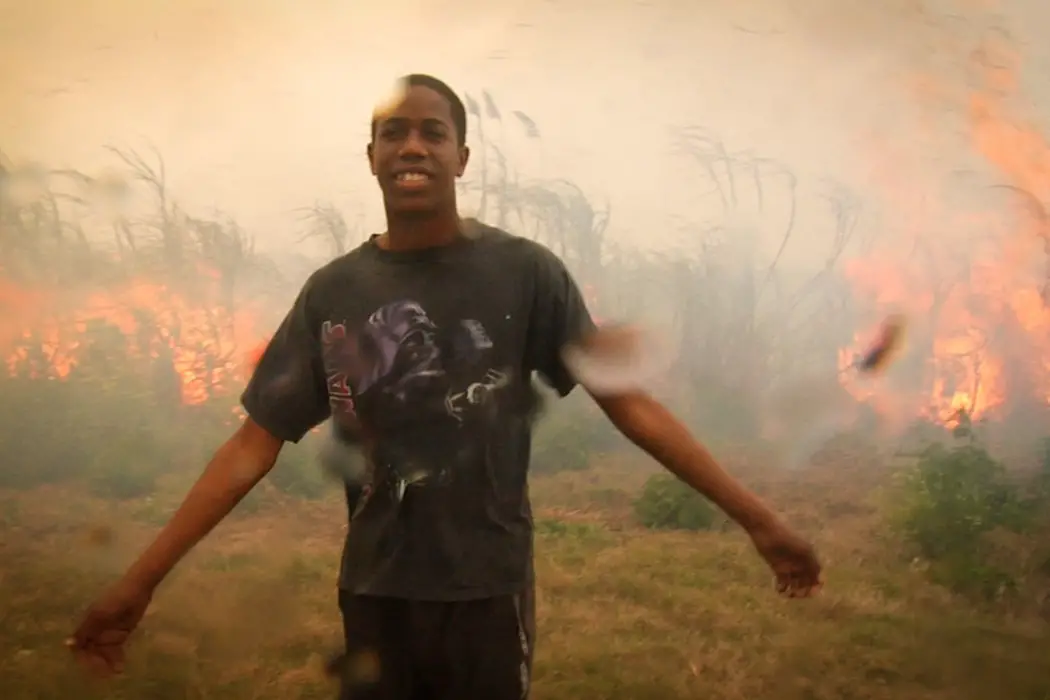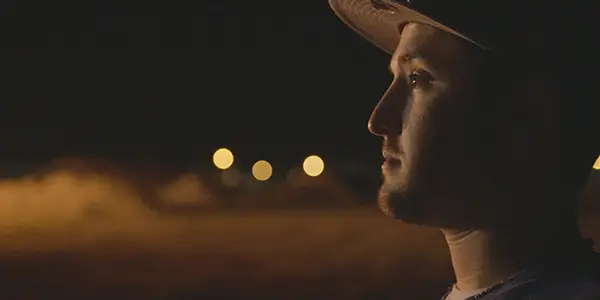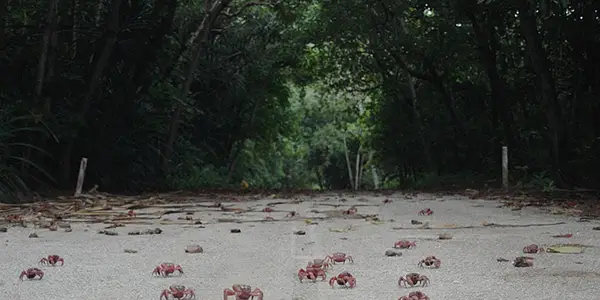Tribeca Reviews: Small Community-Focused Documentaries: PHANTOM COWBOYS & ISLAND OF THE HUNGRY GHOSTS

David is a film aficionado from Colchester, Connecticut. He enjoys…
The two documentaries I managed to see while at Tribeca this year also happened to share a common focus: that of the lives of small, isolated communities, a theme that is actually prevalent amongst many of the films I managed to see at the festival. Phantom Cowboys shows how time affects young men, while Island of the Hungry Ghosts shows a place that time seems to have forgotten entirely.
These films seem to share at least one thing in common, though: how these communities and the people within them deal with struggles, while simultaneously feeling a connection to where they’re from. Their approaches may be different, but the end result is much the same.
Phantom Cowboys

Daniel Patrick Carbone‘s Phantom Cowboys focuses on three young men: they are Nick, a high school football player from Trona, California; Larry, a 13-year-old living near the outskirts of Pahokee, Florida; and Tyler, a dirt track racer from Parkersburg, West Virginia. Beginning when they are young teenagers, the film then skips forward several years to when each of them are young adults, juxtaposing their initial hopes and dreams with what they ended up accomplishing. Interestingly, none of them had left the communities where they grew up, though some, such as Tyler, did manage to become successful at their lifelong dreams.
Carbone‘s structure to his film is easily its most prominent feature. As opposed to just showing the two time jumps one after another, it often flits back and forth between them; for example, it will play narration from one of the boys when he is a teenager and then use that as a voiceover for when he is older. Or, in some cases, it will transition effortlessly from one boy to the next, showing how they both compare and contrast to one another. Besides a few direct interactions, the camera itself is often a bystander, with Carbone‘s fly-on-the-wall approach making the film feel much like a narrative as opposed to a documentary.
Phantom Cowboys does occasionally feel like an aimless endeavor, with a tendency to overly linger on shots of the surrounding landscapes and with droning ambient sound to fill the gaps. But its effect does sink in after it has ended, showcasing not only the inherent struggles of small-town communities but the passing of time that tends to change us all. Sometimes, as in the case of Larry, the law keeps catching up with him, while with others, such as Tyler, though his achievements are noteworthy given the difficulty of making it as a dirt track racer, he is often limited by other growing factors such as his family. Above all, Phantom Cowboys is a poignant portrait of three young men, which, though perhaps not as profound as it intends to be, still manages to leave a definitive mark.
Island of the Hungry Ghosts

Gabrielle Brady‘s Island of the Hungry Ghosts is set on Australia’s Christmas Island. The “hungry ghosts” of the title refers to three focuses of the film: the millions of crabs that migrate across the island, the restless spirits of people who had died there and did not have proper burials, and the people who are housed within the island’s detention center in the hopes of making asylum on mainland Australia. The film flips back and forth between these three subjects throughout its length, focusing also on a trauma therapist named Poh Lin, who works with inmates of the island’s detention center.
Winner of Best Documentary Feature shortly before I had seen the film, Island of the Hungry Ghosts had much hype behind it. I had always enjoyed films that both focus on nature and the mythos that accompany it. Yet, the film soon sets itself off as a much more humanistic-focused story, showing long, drawn-out interactions between Poh Lin and the inmates that she attempts to help. These scenes, which come abruptly and without context, sometimes overstay their welcome despite the often tragic backstory that accompany them. What results is a film that doesn’t really fit within the context of either a humanistic story or one about the island itself.
Island of the Hungry Ghosts works best, though, when it simply lapses into quiet reflection, either showing the endless streams of crabs that traverse the island’s landscape or at one point a minutes-long shot of the crashing waves on the rocks of the shore. Context is occasionally given to the legends of the island, showing the native’s offering to the hungry spirits that they believe still reside there. It’s these images that linger after the film has ended, with its portrayal of an island that, much like the communities of Phantom Cowboys, has been lost in time.
Conclusion
To conclude, both Phantom Cowboys and Island of the Hungry Ghosts are finely wrought documentaries which also touch on universal themes. Though taking place in isolated communities, they reflect on the struggle for happiness inherent in the human condition itself. Both the young boys of small town communities in Phantom Cowboys and the inmates of Christmas Island in Island of the Hungry Ghosts yearn to be free of their pasts, and above all, to find salvation.
Daniel Patrick Carbone and Gabrielle Brady have created films that will hopefully resonate with many people who find themselves in similar life predicaments, knowing that, through these portrayals, there is consolation in knowing that you’re not alone.
If you’ve seen any of these documentaries, what are your thoughts? Tell us your thoughts in the comments below!
Does content like this matter to you?
Become a Member and support film journalism. Unlock access to all of Film Inquiry`s great articles. Join a community of like-minded readers who are passionate about cinema - get access to our private members Network, give back to independent filmmakers, and more.
David is a film aficionado from Colchester, Connecticut. He enjoys writing, reading, analyzing, and of course, watching movies. His favorite genres are westerns, crime dramas, horror, and sci-fis. He also enjoys binge-watching TV shows on Netflix.













